How to properly grow peppers from the Gogoshary group: features of varieties and reviews of summer residents
Bell pepper is one of the ten most popular garden plants. On the plots, tomato-shaped peppers of a variety type (group of varieties) called Gogoshary or Gogoshar are often found. Consider what such peppers are, how they look, how to properly grow their seedlings and care for adult plants in the ground or greenhouse.
The content of the article
Description of the variety
Pepper Gogoshar is a group of varieties that differ from others in a peculiar rounded shape of fruits, resistance to many diseases and high yield. The height of the bushes is from 50 cm to 1 m, but generally their growth does not exceed 50 cm. The color of the leaves is dark green, the shape of the fruit is round, slightly pointed, the size is large. Fruits have a powerful stalk and are directed upwards when ripe. Varieties from the Gogoshar group differ slightly in shape, color and taste (some species are burgundy, purple or black).
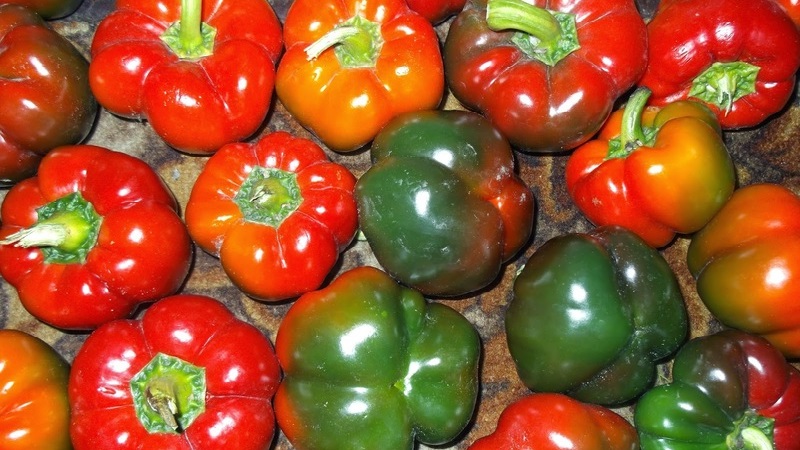
Cultivation technology (Local Gogoshar, Ruby, Ratunda, Merisor and others) is one for everyone. Pepper is a heat-loving plant. It does not tolerate temperatures less than + 16 ° C, therefore, in regions with a temperate and cold climate, it is grown in greenhouses.
Fruit characteristics and yield
The shape of the pepper resembles a small pumpkin: it is slightly flattened, and not elongated, as is typical for many bell peppers. The sides are ribbed, and the walls themselves are thick and fleshy, with a thickness of 7 to 8 mm. In the early stages of development, the skin of the fruit is dark green in color. Over time, it turns yellow and then takes on a red tint.
The taste of vegetables is spicy, they add a spicy-sweet taste to dishes with a slight honey aftertaste. The mass of one pepper is 100-140 g. Strong fruits tolerate transportation well. If necessary, the peppers are harvested still green. When stored in a dry and warm place, vegetables ripen on their own. The Gogoshar variety belongs to mid-season crops. The pepper matures 95-100 days after pollination.
Pros and cons
Main advantages:
- long-term storage of fruits;
- high productivity;
- the meatiness and juiciness of vegetables;
- pleasant honey taste with a slight bitterness;
- independent ripening of fruits;
- transportability;
- low calorie content;
- versatility in application.
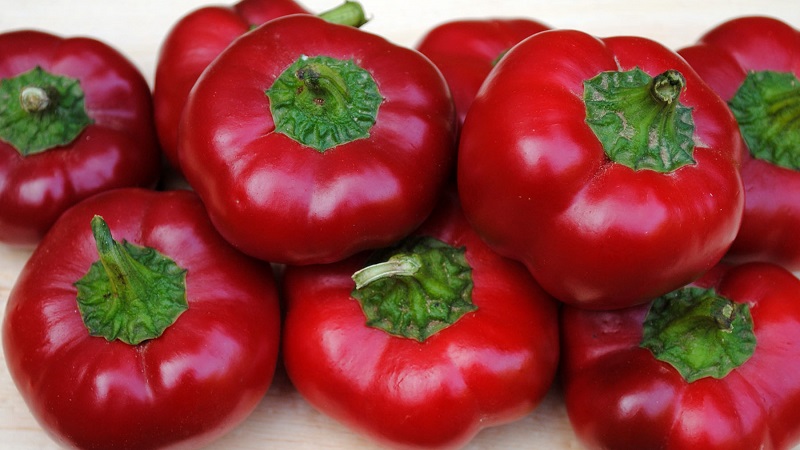
There are also disadvantages:
- poorly tolerates drought and lack of light;
- high demands on fertilizing;
- long term of fruit ripening;
- fragile stem.
On a note. Sweet peppers are used to prevent vascular diseases.
Gogoshary - what is it
The variety was brought out by breeders from the Modav Research Institute of Vegetable Growing. Cultivating these vegetables is easy and even novice gardeners can do it.
Consider the most popular varieties of this group.
Ratunda
The main feature of this variety is the meatiness of vegetables. The fruits ripen in 120-130 days. The weight of one pepper is from 100 to 150 g. From 1 sq. m harvest up to 5 kg. Ratunda pepper has thick walls and rounded ribbing.
Ruby
Standard bush, grows in height up to 50-60 cm... From germination to the beginning of fruit ripening, 135 days pass. The weight of one vegetable is 110-150 g. From 1 sq. m are harvested 3-5 kg of the crop. Ruby variety has a high vitamin C content.
Gingerbread man
The bush is half-stemmed, its height reaches 50 cm... The fruits of this variety are similar to medium-sized tomatoes. From germination to biological ripeness, 120-125 days pass. The mass of one vegetable is 130-160 g, the wall thickness is 7-9 mm.
Olenka
The bush is compact, reaches a height of 45-50 cm... Sweet peppers are early maturing varieties. The weight of one pepper is 90-100 g. When growing a vegetable under a film shelter, up to 9 kg of crop are collected from 1 sq. m. Fruits are flat-round with pronounced ribbing.
Sweetie
A low-growing bush reaches 40-60 cm... Candy is considered an exception among other varieties and belongs to the early maturing varieties. From seedling to biological maturity, 115-125 days pass. The mass of one pepper is 40-50 g. The vegetable has a spherical shape. From 1 sq. m harvest up to 5 kg. It is recommended to grow the variety in greenhouses.
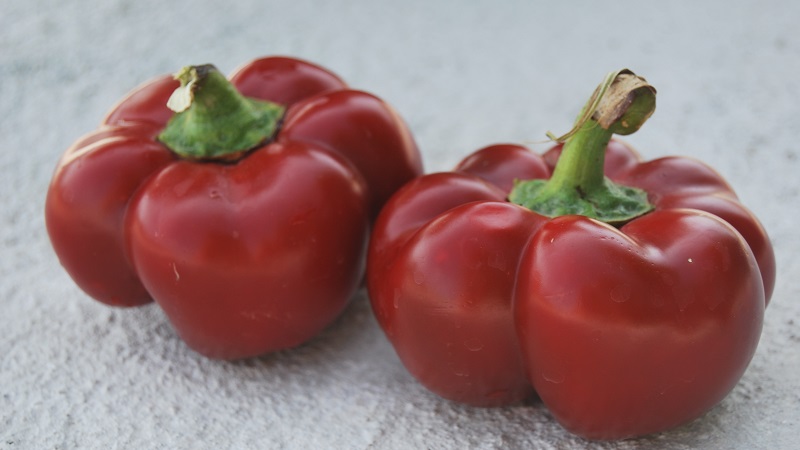
How to grow
Gogoshar varieties are easily pollinated, therefore, to obtain a clean harvest, the culture is planted away from other sweet and bitter peppers. A plot for growing vegetables is chosen well-lit by the sun and protected from the wind. Crop rotation plays an important role.
The culture grows well after such vegetables:
- cabbage;
- beet;
- onion;
- carrot;
- cucumber.
To reduce the likelihood of contracting diseases, typical of the nightshade family, pepper is not grown after potatoes and tomatoes.
Read about other varieties of pepper:
High-yielding and early maturing variety of pepper "Morozko"
The best varieties of purple pepper and their features
What is Dungan pepper and how can it be used
Soil and seed preparation
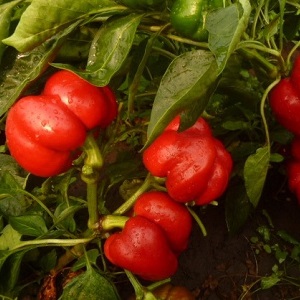 For growing seedlings in a specialized store they buy a substrate or prepare it themselves, mixing turf, peat and humus in a ratio of 2: 2: 1. Sawdust or coarse sand is also added to the mixture.
For growing seedlings in a specialized store they buy a substrate or prepare it themselves, mixing turf, peat and humus in a ratio of 2: 2: 1. Sawdust or coarse sand is also added to the mixture.
Peppers are grown in seedlings... Before sowing, the soil is allowed to warm up well. The soil must be disinfected by calcining in the oven for 10-15 minutes or by watering with a 1% solution of potassium permanganate.
Seeds are also disinfected, for 20-30 minutes, placing in a 1% solution of potassium permanganate and then rinsing with clean water. For germination, the seed is wrapped in a damp cotton cloth for 2-3 days. As the gauze dries, the seeds are moistened.
Sowing is done in wet soil... The soil is moistened with a spray bottle. To create greenhouse conditions, the container with seeds is covered with glass or film. Seedlings are placed on a warm, lighted windowsill before planting in a permanent place of growth.
For your information. Seedlings do not tolerate changes in location, temperature and light.
Sowing pepper perform at the end of February.
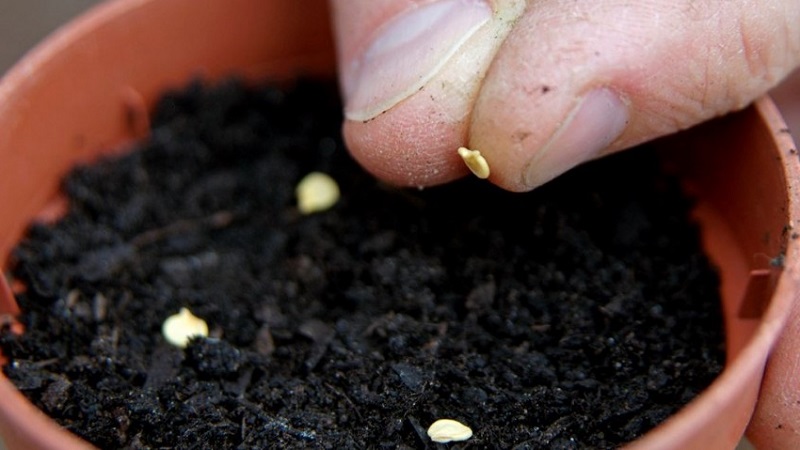
Seedling care
Caring for young plants includes:
- watering;
- loosening;
- dive;
- hardening;
- ensuring optimal temperature and illumination.
Important! Water the seedlings regularly, but in moderation, as the soil dries.
When the seedlings rise 2 cm, perform the first loosening... Do this carefully so as not to damage the root and stem. When 2-3 true leaves appear in seedlings, a dive is carried out. In this respect, pepper is a capricious plant. The transplant is performed with great care.
Two weeks after germination the culture is fed with complex fertilizers:
- "Foskamide";
- Kemira-Lux;
- "Superphosphate".
A sharp drop in temperature significantly slows down the growth of seedlings... The most favorable temperature regime for plants is + 18 ... + 22 ° С. If natural light is not enough, artificial light is installed.
10-14 days before planting in a permanent place, the plants are hardened... To do this, the culture is taken out on the street or balcony daily, first for 1-2 hours, then for 2-3 hours. Over time, the exposure of plants to the fresh air increases.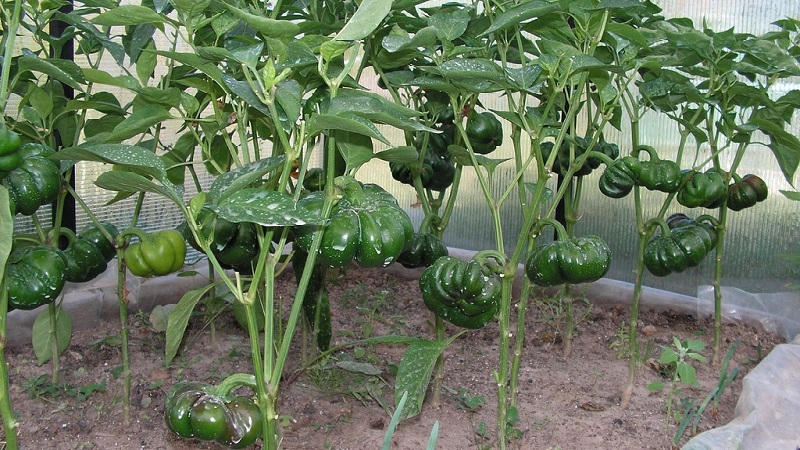
Planting pepper in a permanent place
Seedlings are transplanted only into well-heated soil.... The air temperature should be at least + 16 ° С day and night. Seedlings do not form lateral roots, so they do not deepen much.Otherwise, plant development will slow down.
The bushes are planted so that in the future the plants do not interfere with each other.... Density leads to increased foliage growth and a decrease in stem thickness, which weakens and makes them fragile. Seedlings are planted in rows with a density of about 5-6 shoots per 1 sq. m. 60 cm is left between the rows.
It can be useful:
Adult plant care
The culture does not tolerate drought, so pepper is watered regularly... The aridity of the soil also has a bad effect on plants and leads to the loss of flowers and ovaries, which significantly reduces the yield. Moisten the plants with warm water and only at the root. Watering is done in moderation.
High air humidity is equally important for pepper... For this, the aisles and paths are watered. Also, be sure to loosen the soil. This is done very carefully so as not to damage the root system, otherwise the plants will develop poorly or even die. In order not to carry out loosening, which is dangerous for peppers, the soil is mulched with straw or sawdust. A layer of mulch is made 2-3 cm.
Like any garden crop, Gogoshar needs fertilization... For the entire growing season, feeding is done three times. 10-14 days after planting seedlings - with nitrogen fertilizers, during flowering - with complex means, with the appearance of fruits - with phosphorus fertilizers.
Important! Fertilizers are applied strictly according to the instructions on the package of the drug.
Prevention of diseases and pests
Gogoshary pepper has an average resistance to diseases and pests... Plants are affected by rot of various types and fungi. Also, slugs, Colorado beetles, and aphids often attack the culture. Because of them, the pepper gives a poor harvest or even perishes.
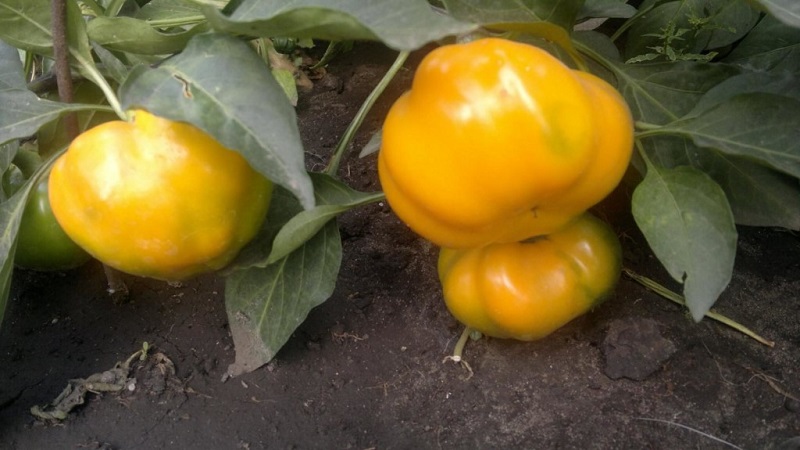
Chalk and ash are used as organic agents to get rid of pests.... They are periodically sprinkled on plants. Garlic infusion also helps from insects: 200 g of grated garlic or onions are stirred in 10 liters of water and the mixture is allowed to brew for a day, then the plants are sprayed. Spraying with insecticides is carried out. During the season, 2-3 treatments are performed with an interval of 21 days.
To get rid of fungi, use 1% Bordeaux liquid... Even before flowering, the peppers are sprayed with Oxyhom (2 tablets are stirred in 10 liters of water). Affected fruits are burned or buried.
Reviews of gardeners
Many summer residents opt for varieties from the Gogoshar group.... The reviews are only positive: the culture gives a good harvest, and caring for it is not difficult.
Vyacheslav, Taganrog: “A couple of years ago, neighbors at the dacha gave me some ripe fruits of Gogoshary pepper to taste. I really liked the taste of the variety, and I decided to leave the grains for planting. In early February, he sowed seeds. They ascended at the same time, and in March they transplanted the young plants into a greenhouse. The pepper blooms profusely. Ripe vegetables have a deep red color, the thickness of the walls reaches about 1 cm. The pepper tastes sweet and juicy. Since this variety is very meaty, my wife and I use it to prepare a variety of dishes and preparations for the winter. Pepper always gives a plentiful and high quality harvest. I recommend everyone to grow Gogoshar ".
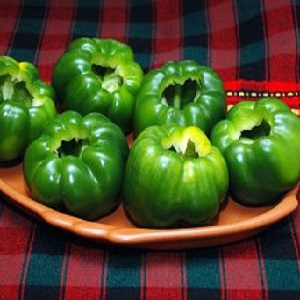 Svetlana, Nizhny Novgorod: “I have been growing Gogoshar pepper for over 10 years in a row. As soon as I saw the photo, I immediately liked the vegetable for its unusual shape of the fruit. This is the best sweet pepper for me. I plant the rest of the species only for comparison and diversity. The main advantage of this vegetable is its versatility in application. Children love to eat it fresh, and I cook many fragrant dishes from it, use it for spinning and freezing for the winter. I look after the pepper as standard. I carry out timely watering, loosening and feeding. The variety is very tasty, I will continue to grow it ".
Svetlana, Nizhny Novgorod: “I have been growing Gogoshar pepper for over 10 years in a row. As soon as I saw the photo, I immediately liked the vegetable for its unusual shape of the fruit. This is the best sweet pepper for me. I plant the rest of the species only for comparison and diversity. The main advantage of this vegetable is its versatility in application. Children love to eat it fresh, and I cook many fragrant dishes from it, use it for spinning and freezing for the winter. I look after the pepper as standard. I carry out timely watering, loosening and feeding. The variety is very tasty, I will continue to grow it ".
Alexander, Cheboksary: “I have been growing the Gogoshar variety for a long time.From the first time I really liked the pepper, it became a real favorite in our family. I now cultivate this sweet vegetable annually. My Gogoshar pepper always grows in such quantity that I share it with my friends and relatives. This type of vegetable is low in calories but high in vitamins. I make lecho from this pepper, add oil and a little spices, it turns out to be tasty and aromatic. I advise everyone to grow Gogoshary sweet pepper ".
Conclusion
Summer residents of the Gogoshar variety fell in love not only for their extraordinary appearance, but also for their excellent taste and meatiness. It is for these qualities that you can come to terms with some of the vagaries of culture and pay more attention to it. In addition, the vegetable contains many vitamins and minerals that are so necessary for the body. If desired, even a beginner can cope with the cultivation of Gogoshar peppers, if he makes a little effort.
You will learn more information about growing Gogoshar pepper from the video: